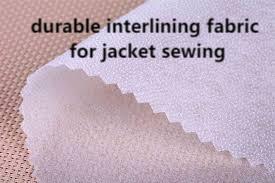In the world of apparel manufacturing, Interlining plays a silent but crucial role in enhancing the quality and functionality of garments. By inserting interlining between outer fabrics and linings, manufacturers add structure, support, and a refined finish to everything from formal suits to casual shirts. While it may remain hidden within the layers, its impact is highly visible in the drape, durability, and comfort of finished clothing.
Enhancing Garment Stability and Shape
One of the core functions of this textile component is to provide stability to garments. It helps collars maintain their upright posture, reinforces waistbands, and gives shoulder pads their form. By adding stiffness or flexibility where needed, it ensures garments retain their shape throughout wear and washing cycles. This consistency is especially vital in high-end fashion, where silhouette and fit define value.
Applications Across Fashion and Utility Sectors
Though closely associated with fashion apparel, the material’s application goes beyond style. It is widely used in uniforms, workwear, outerwear, and even accessories like hats and bags. In utility sectors, the material’s thermal and moisture-wicking options make it a practical choice for protective and industrial clothing, helping wearers stay comfortable while working in challenging environments.
Types and Material Composition
There are several types, including fusible and non-fusible varieties, each designed for specific purposes. The base materials range from cotton and polyester to blended fibers, each offering different weight, texture, and performance levels. The choice depends on factors such as garment type, desired flexibility, and production techniques.
Selection Criteria and Compatibility
Choosing the right type requires a close understanding of fabric compatibility. Factors like shrinkage, heat resistance, and adhesive quality (for fusible types) must align with the garment’s fabric. Compatibility tests and proper sampling are essential to prevent defects such as bubbling, wrinkling, or misalignment during production.
Sustainability and Future Innovation
Modern manufacturers are now turning toward sustainable practices. With demand for eco-conscious textiles rising, options made from recycled or biodegradable fibers are gaining traction. Additionally, innovations in bonding technology and stretchable compositions are paving the way for adaptive applications in sportswear and smart textiles.For a deeper look into this essential textile component and how it's revolutionizing garment manufacturing, visit:
https://www.interlining-factory.com/news/what-is-interlining-types-applications-and-more.html

